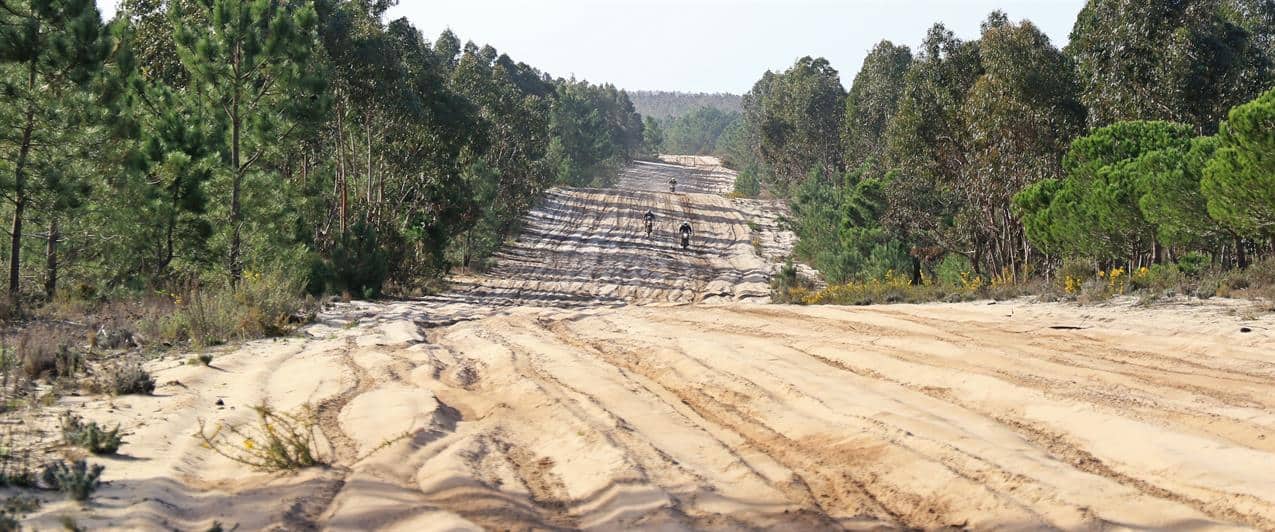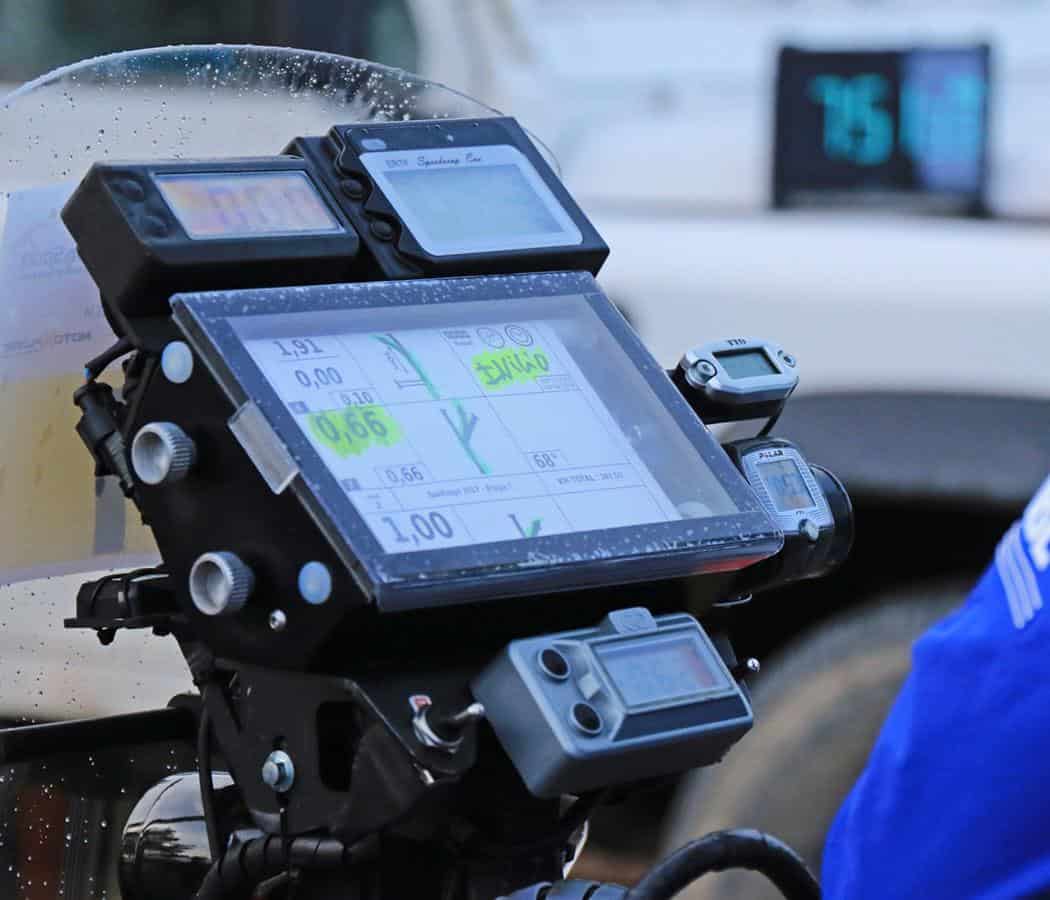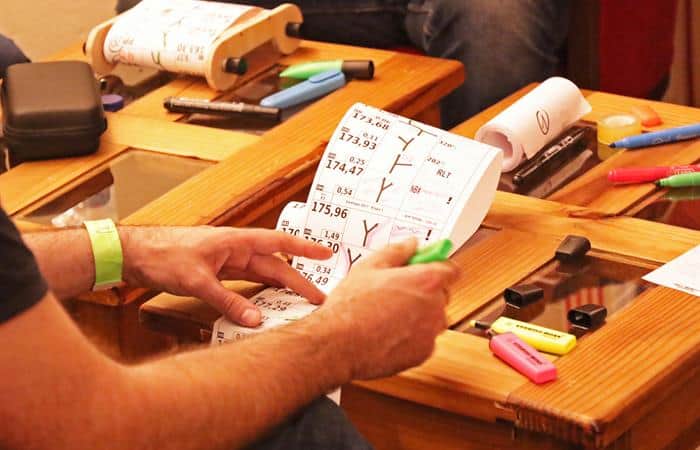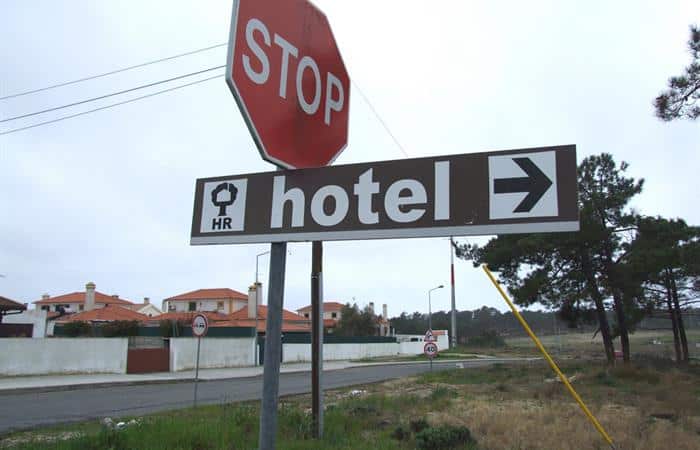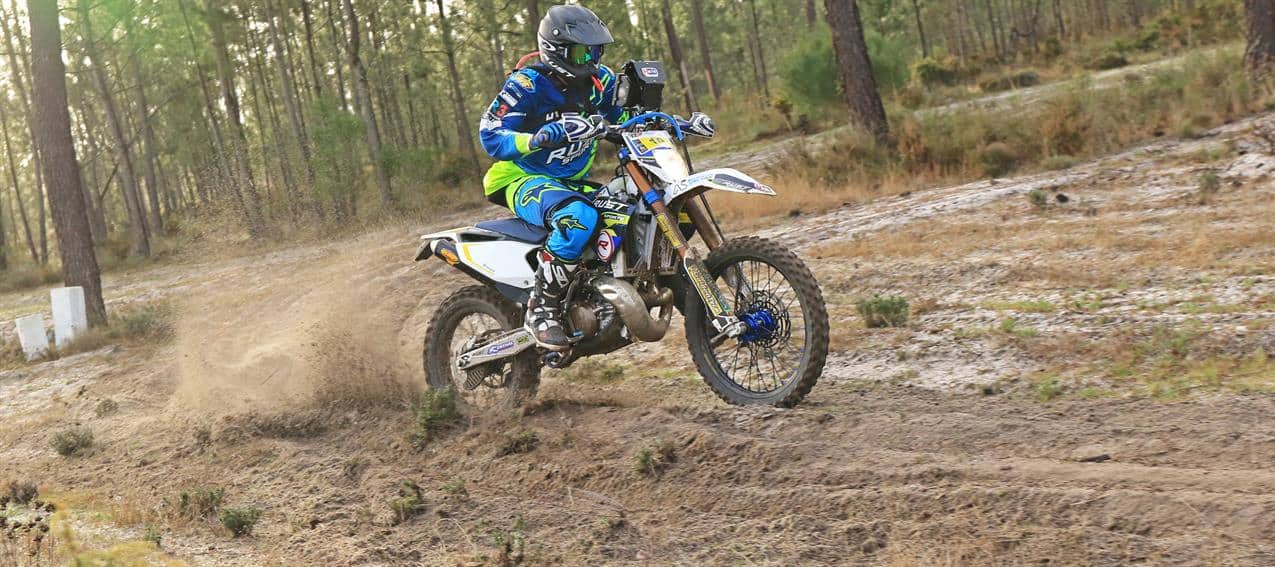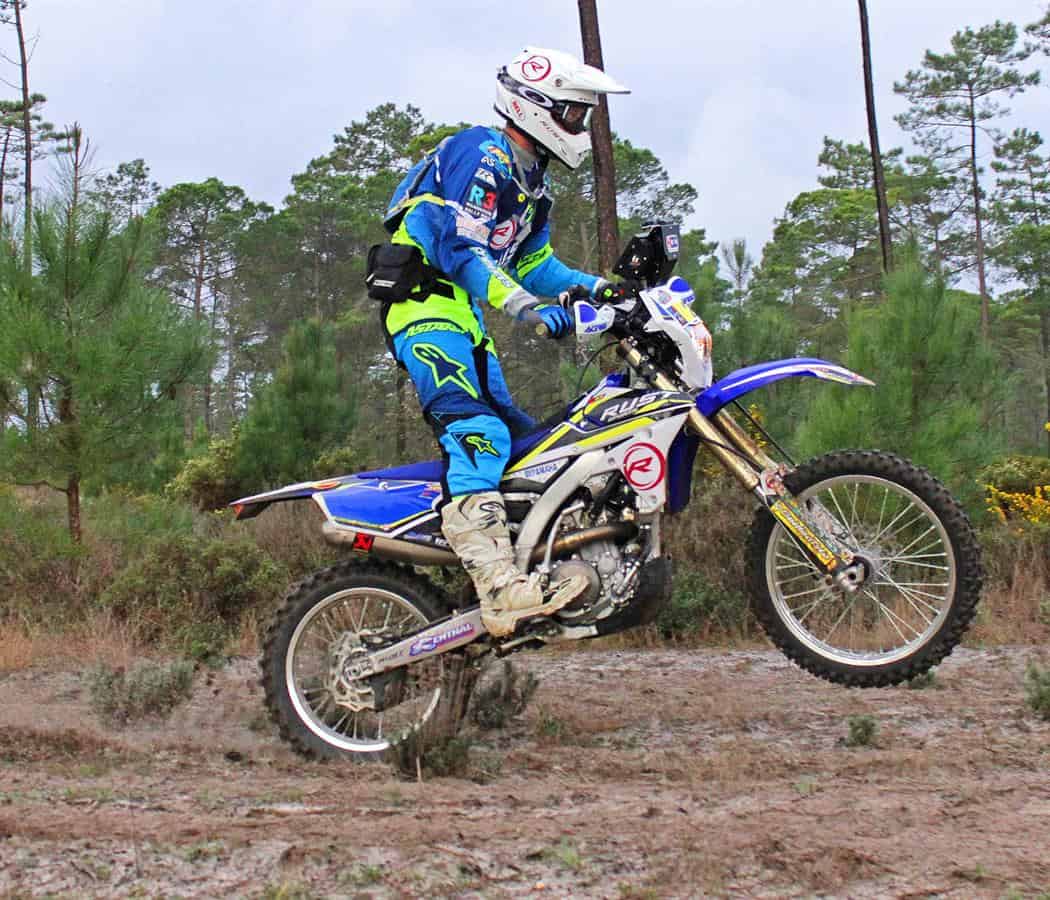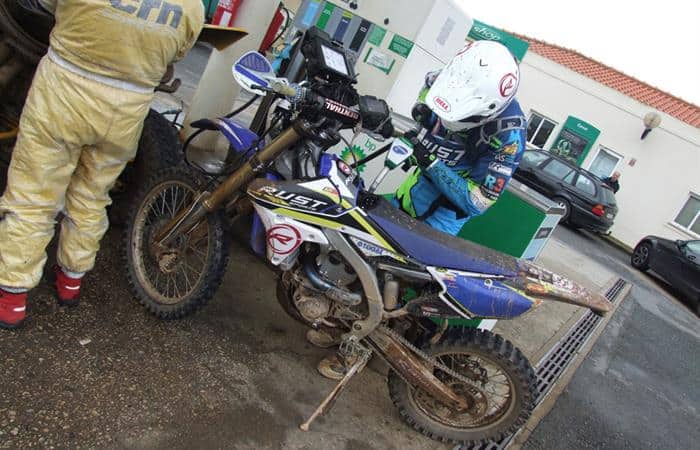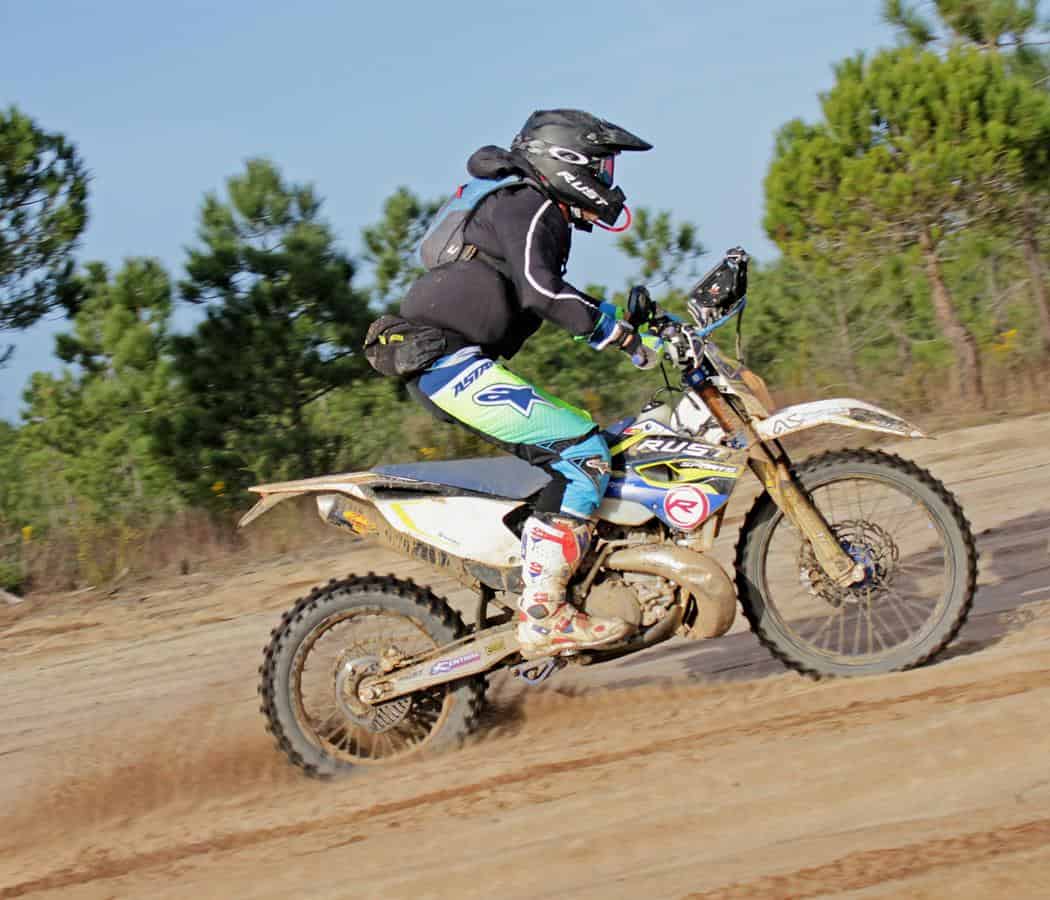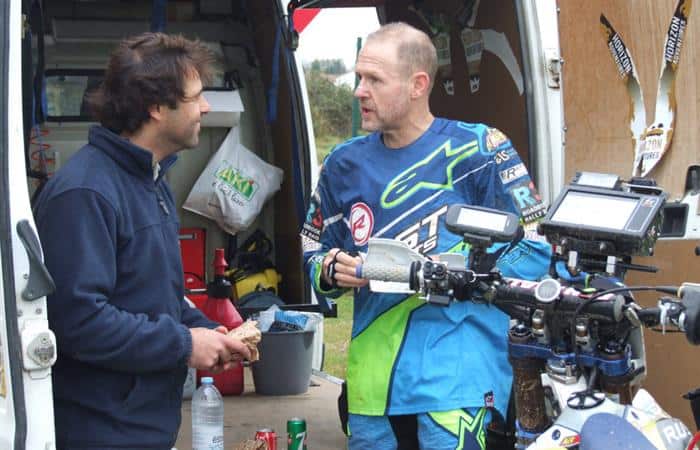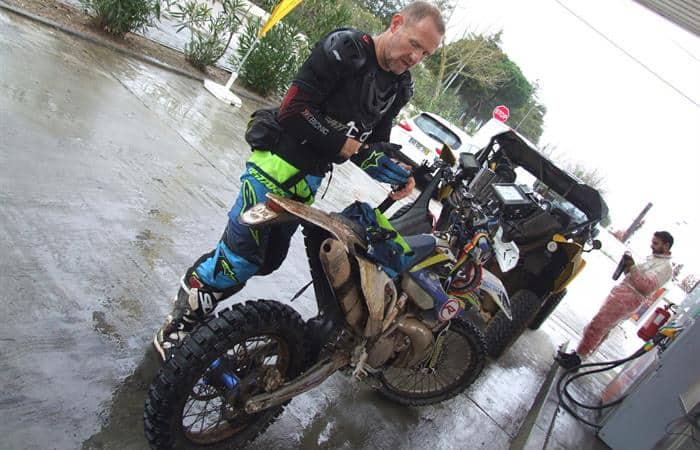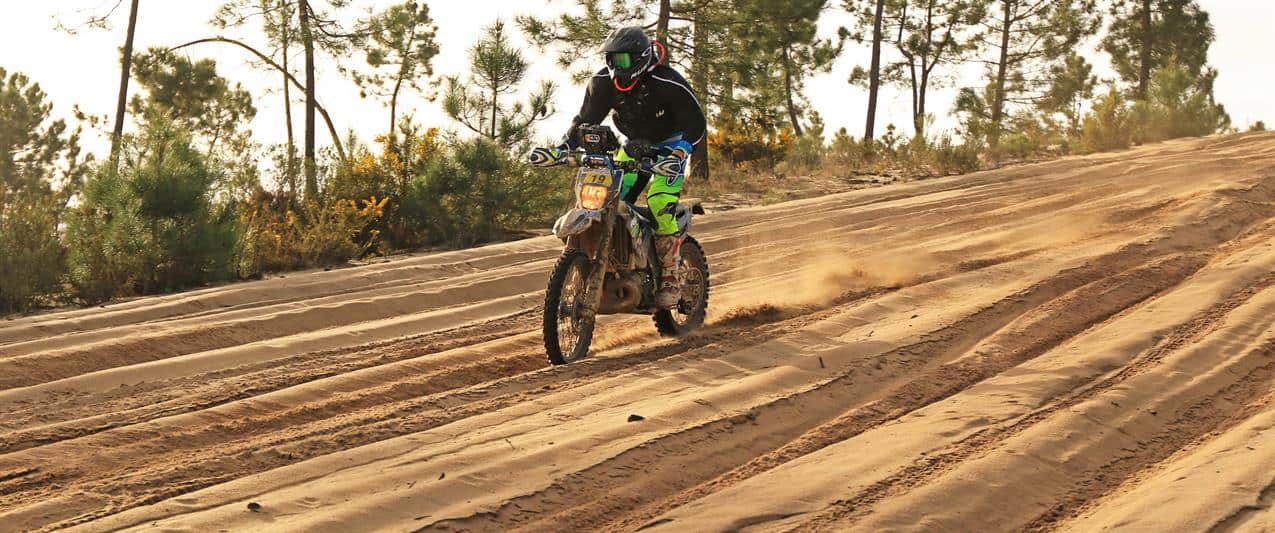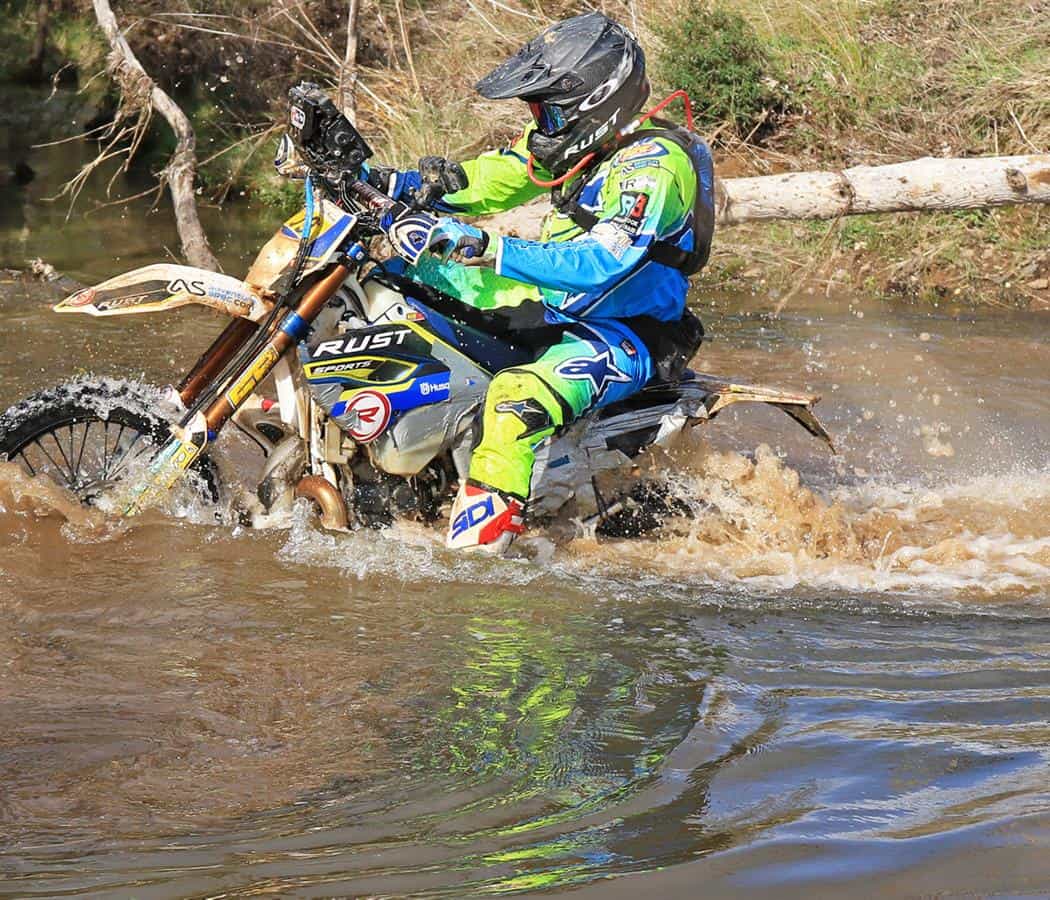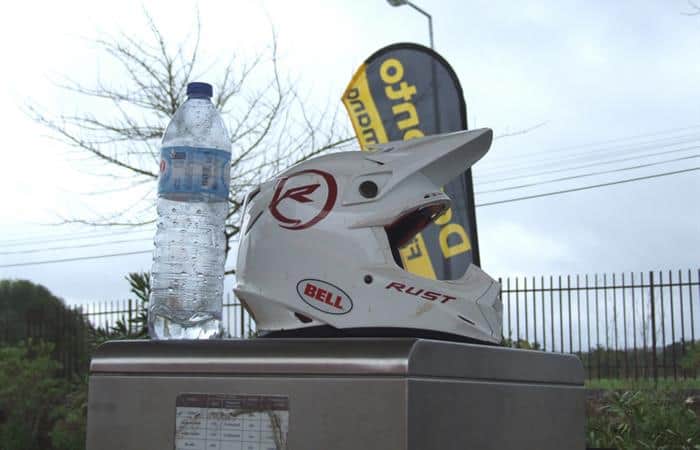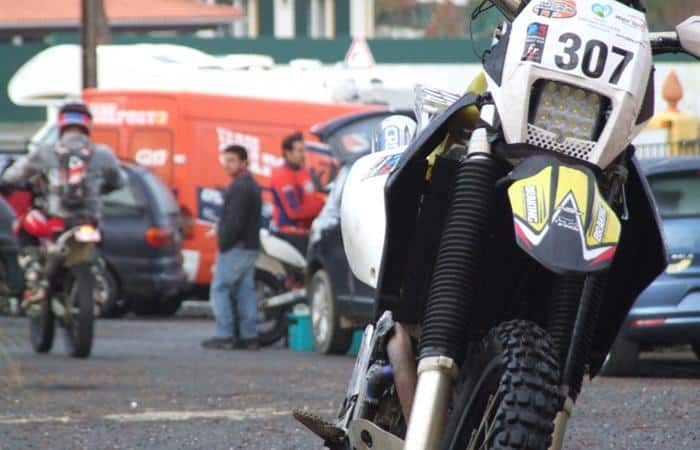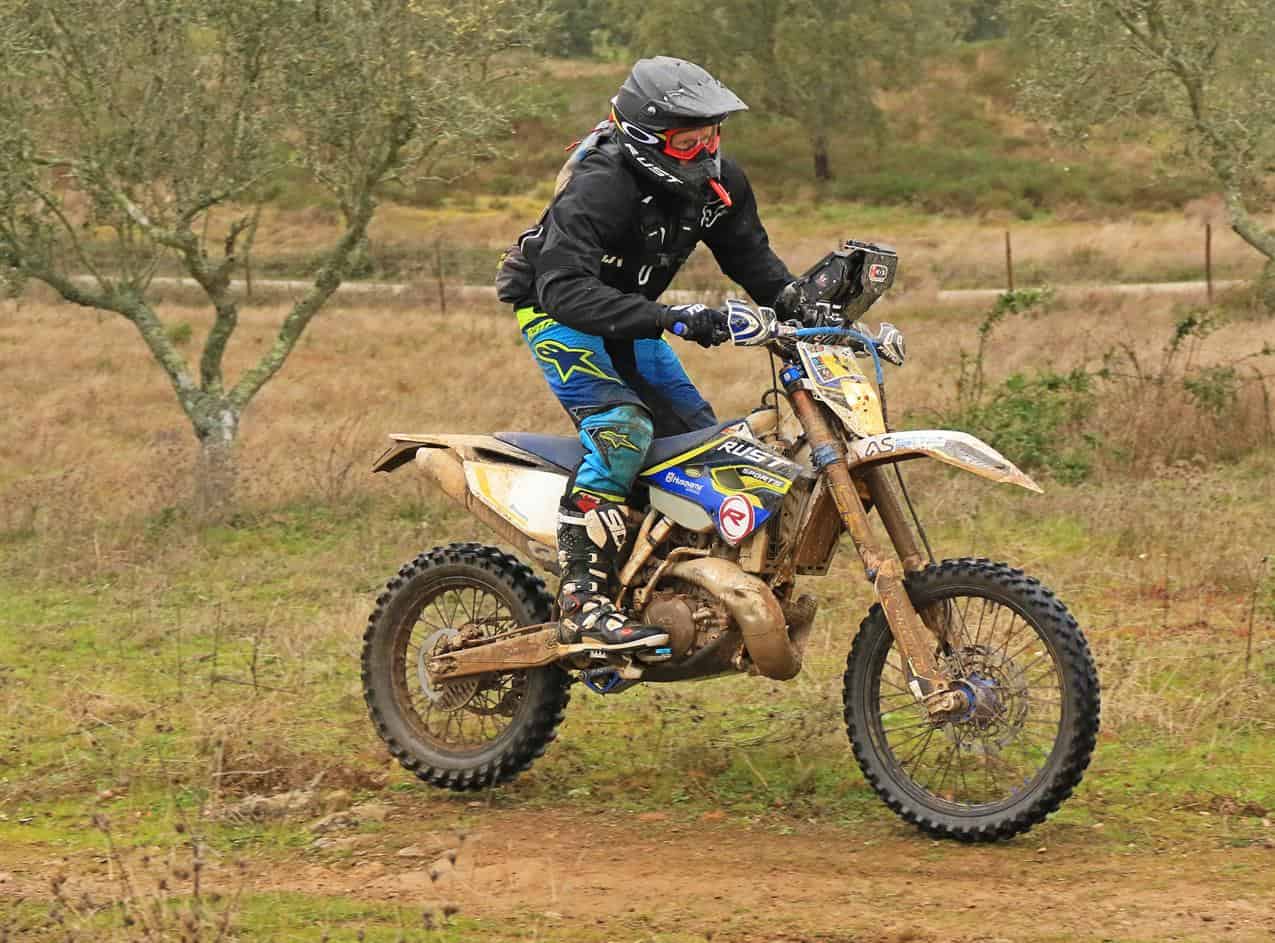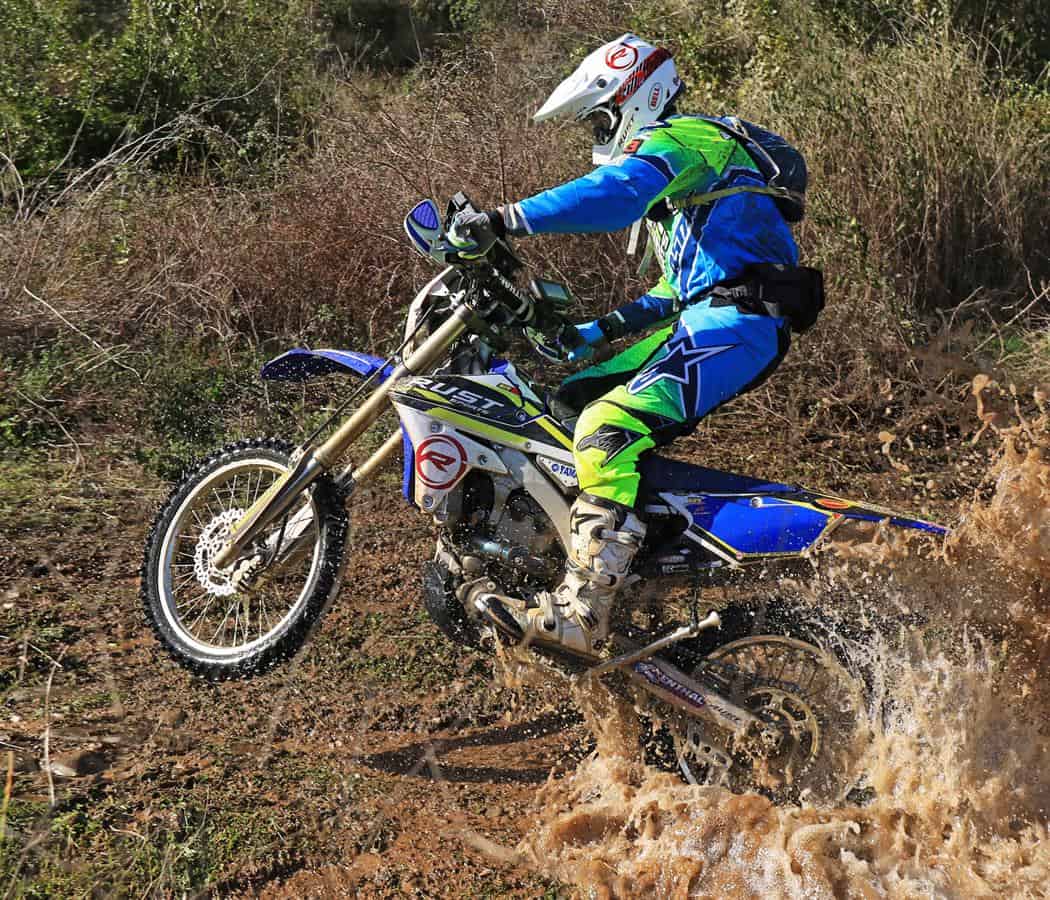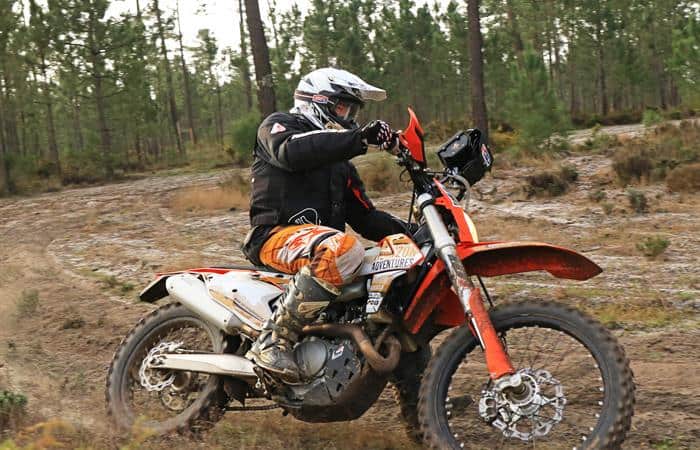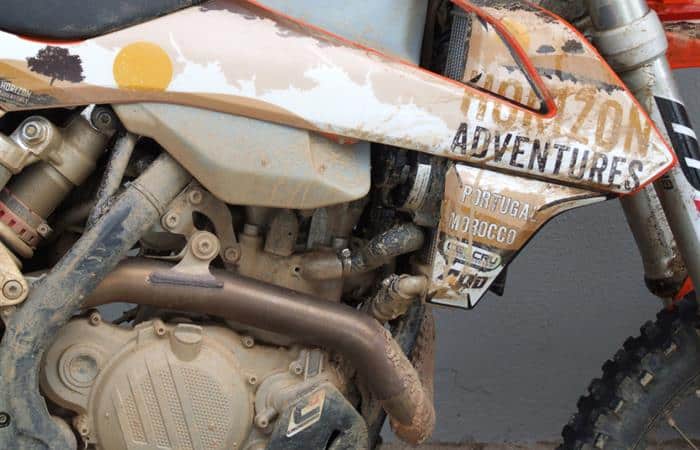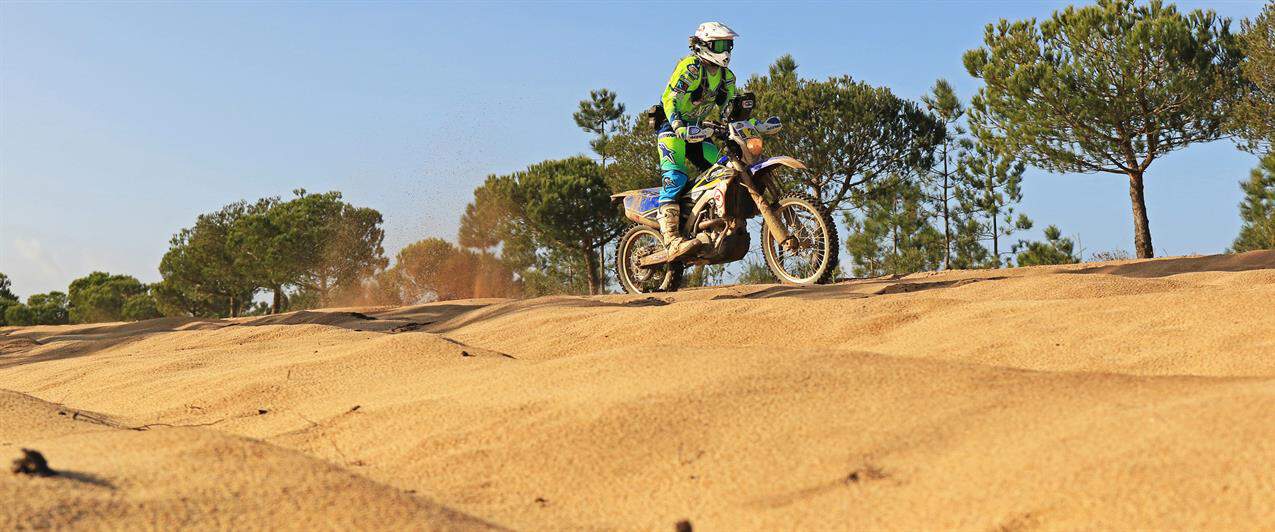RUST committed to the Portuguese R3 Rally Raid Series for 2017. Round One at Santiago Do Cacem took place at the end of January and we were there – with bells on!
In RUST 21 Warren M. got totally seduced by the rally raid experience in Portugal, so much so he vowed RUST would return in 2017, in force. True to his word, RUST is back – with Editor JB along, too – slightly startled by the whole thing – riding shotgun. And we’ll probably have more riders along yet. Rally raid takes our passion for all things enduro and adds a virtual shot of Tabasco, it really is a whole new flavor-twist on something we already love.
Here’s what JB found on his initiation…
1. IT’S NOT SO COMPLICATED
The navigational equipment on first introduction looks rather complicated, intimidating even, but really it isn’t, and the tech, by modern standards, is very simple. Here’s what’s to know.
Power – as in electricity, very necessary to run the road book motor and the electronics. Power is taken direct from your bike’s battery. Two simple pre-made universal-application wires – with inline fuse and the correct block connectors for the nav kit – are attached to the positive and negative terminals of the battery then you run the cables along a frame tube up to the headstock area where they connect to the nav kit. There’s a master switch (on/off) that stops power being drained while you’re not riding.
Road book – looks flash but really is just a metal box with a removable clear screen (plexiglass we’d assume) and a basic electric motor that runs two spindles to scroll the paper sheet up and down. A basic switch by your left thumb toggles back and forth to activate the up/down movement. Colouring-in, or ‘painting’ the road book instructions is a matter of common sense. Paint your course on each ‘tulip’ (diagram) green, paint hazard warnings red, mark speed restriction zones double (so you don’t miss them and accrue massive penalties), outline ‘chronos’ (timed sections, ie against the clock) in brightest luminous yellow so you know when you should be pushing on. It would pay to learn the abbreviations used in the road book (which are in fact French) beforehand – easy to find with an internet search.
ICO – y’know we don’t what ICO stands for, but we do know that it’s a resettable tripmeter. You set this to zero at the start of the day and then you match the readings to the instructions on your road book. The beauty in this quite simple beast is that if you overshoot and add say 2/10ths of a kilometre to the reading then by the simple press of a button you can take those tenths off again so your reading is spot on for your location. In fact with the slight variations in readings (and serious navigational errors) you spend much of the day resetting the ICO to correspond with the road book. But it’s your number one friend after the road book.
Antennae – it’s a little black box on top of the road book bracket that beeps up at the world’s satellites so as to give your ICO its distance reading.
GPS – We had a basic Garmin unit sat on the handlebars using a RAM mount. It was set to two basic operations – speedo (important for speed-restricted zones) and compass (aka CAP). Sometimes you have to go off-piste (called HP – horse-piste) and all you’ll have is a distance on the road book and a heading to go by, so the compass heading is important here. Also, of course, it’s useful to check you’re travelling the right way down a track (most road book instructions come with a CAP heading, eg. C.160º).
Organisers’ transponders – bit of Big Brother here, and by the way we think they supply two in case one fails. Anyway these transponders transmit (again via satellites) back to the organisers’ laptop and plot your position and speed (penalties accrue for speeding where you shouldn’t) in real time. There’s some kind of an alarm system, too, so if you stop moving for too long the organisers will call your mobile (which you’re required to carry) and make sure you’re okay – if not the transponders mean they have your exact co-ordinates to guide emergency support to you.
2. IT’S IN SOME WAYS QUITE RELAXED
You can imagine the sense of anticipation coming into an event like this. Warren M. entered us in the Pro class (jeez, I’m barely Sportsman!) and as well as being run to FIM/FIA rally rules this event attracted some proper rally aces, including at least one man just back from Dakar. Being 12th starter in a field of over 70 we anticipated some serious paint swapping on the trails.
In fact it’s much calmer. Riders set off at one a minute and the trails are generally quite wide so there’s room for everybody and almost no argy bargy. Even when the 1000cc race buggies come screaming up on you there’s some gentlemanly conduct, some have sirens, some call out – all give a wave of thanks. So you can settle into your own pace and try and figure out what the heck to look for. Maybe it’s not like that in proper pro races like Dakar, but here it was very agreeable indeed.
3. IT’S FAST!
Generally the trails allow for a pace that’s quite a bit faster than you’ll find in a closed-course enduro and quite a few times each day we found ourselves on well-graded open tracks that meant you could go flat-stick in sixth for minutes on end. On the WR250F that meant a fish-tailing 120km/h, on the TE300 about the same, but slightly more stable. Bigger bikes of course went much faster. These high speeds make the fitting of a steering damper a serious consideration.
4. BUT IT PAYS TO SLOW DOWN
Speed is one thing, but going that fast and navigating at the same time is very difficult. Even the top riders strike a balance between speed over the ground and taking the time to be accurate with the navigation. Rallying is a study, not a harebrained rush.
So you find fairly quickly a happy point where you can ride relatively smartly and still hit 90% of the navigational marks. Hitting them all is nigh on impossible; a perfect day’s navigation is something even Sam Sunderland dreams about. It’ll take practice to get the navigation down pat, but as you come familiar obviously you start processing everything faster and so make faster times. But for where we are now we make bigger gains by going slower and getting the navigation correct.
5. IT’S A LONG DAY
We like this; you get plenty of hours in the saddle with rally raid. Which means you’ll need to marshal your energies and keep an eye on your bike’s condition (chain especially). Did we get tired? No, proper racing snakes we are.
6. IT’S TECHNICAL
Rally raid is not a beginners’ event. The trail is long, but it doesn’t lack technical moments, we found some awesome downhills (max concentration) and great climbs (sketchy when wet) and one particular river crossing was borderline on depth. And there was deep sand for long-long stretches. Nothing a seasoned clubman can’t cope with, but no walk in the park.
7. IT’S A MASSIVE BUZZ
Boy it’s addictive. You’ll love it when you get the navigation right and your riding is flowing – and you’re making time on your rivals. You’ll go stark raving nuts when you get lost and you’re scrabbling around trying to regain the route, minute after minute slipping away.
Rally Raid number two – lessons learned with Warren M.
Firstly, be better prepared! I don’t know why or how this always happens, but I just can’t seem to get to any race meeting without running late.
The most important lesson I’ve learned is not to underestimate the challenge of this type of riding. I did, but not any more. I have always liked more extreme enduro conditions or tough hare and hounds and the physical challenge that comes with that territory. In my very short newborn-to-infantile experience of rallying so far, I’m convinced that Rally Raiding has made me a better rider. How? By forcing me to be more mentally focused and aware while riding. The events are also typically fast, long and held over multiple days, with you spending six hours or more a day in the saddle. The added bike time and mental focus needed for long periods helps immensely when it comes to improving skills all round. It’s more mental and strategic than physical, although hugely enjoyable.
I urge you to give rallying a go. And yes, it’s sometimes maddening. But it’s all worth it. Perhaps it’s because of the challenge to change the way you approach racing. This type of riding is a combination of fast, technical and slow – or just plain slow if you can’t bring these elements together in a consistent ‘flow’. Your pace is largely dependent on your road book preparation and instrument layouts as I’ve come to find out. If you try and go too fast you’ll screw up the navigation, and too slow and you might as well forget competing and enter the hobby class (which is also loads of fun and like a good day out trail riding with a road book for company). I prefer the competition – it pushes you to improve. If I was going to set out an approach that I feel would result in a decent performance (none had by me so far, a 13th overall at the last event), it would be the following:
Develop your own method to mark up your road book. This may take you an event or two to figure out, but have the confidence to give it a go. I was glad to have guidance from local ace Joao Soares at my first rally, which I carried over to this race – for day one at least. After day one I realised that I needed to change the way I ‘painted’ my road book (this is how our fantastic Portuguese hosts describe marking up the road book). I needed to change my method to make sure that I could decipher my markings with a quick glance, a matter which had eluded me on day one. I changed my ‘paint’ colours and started linking icons and information differently – it worked, on day two my new painting strategy had improved my navigation and consistency markedly. I still made mistakes but much less than I did the previous day.
Don’t get caught speeding! I had to have had the highest penalties awarded for speeding in limited zones – arghh!!! Speed penalties are calculated by adding 1 second per km/h per 10 metres that you exceed the limit. (eg. you do 55 in a 50 zone for 10 meters then the penalty is: 1sec x 5km/h x 10m = 50seconds) and believe me it’s really easy to miss the speed limit zones. Over the two days I lost over nine minutes to these pesky limits, and yes I was being careful. I now know that I need to move my speedo and compass combo (a Garmin 650 GPS) from the handlebar to the top of the road book tower next to the ICO and change the way I indicate the speed limits on the road book.
Once familiar with the instruments and tower, don’t leave the tower set up to anyone else. Make sure that you do this yourself and have a clear view of the CAP and speed at eye level. I plan to speak to Miguel from F2R (who supplied our road book readers, mounting and ICO) before the next event and have him change the tower configuration to suit me. I may even ask him to add a second ICO to have a more detailed ‘heads up’ display. It’s too easy to become distracted when instruments are out of line of sight. This all sounds very technical but it’s pretty easy and is accomplished by removing a few bolts and screws on the mounting plate and repositioning the instruments. Spend some time with this and I’m convinced it’ll help your results. My biggest goal is to eliminate the nearly 16 minutes of speed and distance penalties I racked up at the last event and to try and keep these under five minutes over the next three-day event.
Add a ‘rally pack’ to the back fender. And so minimise weight in your waist belt (its advisable to carry a good tool kit). This will allow you to add additional kit options such as spare gloves, a lightweight water resistant windbreaker and a spare pair of goggle lenses (for example). I use a Scott Six Days waist belt that is over five years old (and still looks like new), this is my five-star secret product. It is unbelievably comfortable and doubles as a kidney belt / lower back support due to its elasticised belt. On long rides this makes a big effect.
So yes, I love this sport! I’ve met new friends, continued to learn new skills and its fuelled dreams of adventure as a result of me realising that I am becoming more capable at navigation and self-sufficiency.
We look forward to seeing you out on track… come and join us or just give rallying a go at a local event near you. We are supported by Horizon Adventures in Portugal who are a great bunch of guys. A big thanks to both Pedro and Joao for their continued assistance. If you’re into rally raid too, do drop us an email at editorial@rustsports.com about your experiences, we’d love to hear from you.
I love rally raid too! By Dave Chislet
This is my third rally raid. I started in October last year, I came with Rob Hughes and Mathias (from Offroad Portugal) for a weekend to learn road book and then rode the Tour of Portugal and now the R3 champs.
Once you’ve ridden rally raid you’ll love it, there’s varied terrain, long days, no ticker-tape,. Sure tthere’s the frustration of getting lost but this is outweighed by the feeling of achievement in finding your way. And you can ride at your own pace. And everyone is so friendly: the other riders, the organisation, the farmers, the locals – everyone loves it, they take motorsport to their heart.
I rode enduro a long time ago, then took ten years off, got back into it, but after watching Dakar for years I was attracted to this kind of a challenge. It suits our age, asking for concentration and skills. Going back to standard enduro I found its for the youngsters. For me, rally raid is it, I’m totally hooked.
We have a good team for this, too, sharing costs by putting six or seven bikes in a van to come over. Whoever drives the van will leave on a Wednesday, catching the overnight ferry, while the rest of us fly down on a Friday (from Bristol Airport) and fly back Monday. We all chip in on the van costs and the driver has his trip for free. To be honest once the bikes are down here everything else is so affordable, from accommodation to hire cars to food. It’s maximum enjoyment for the money!
If you want to read the issue this feature appeared in, click on the link below…
Read full article in RUST – Issue 23 or download as a pdf here

